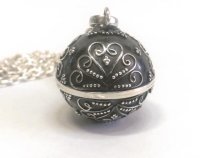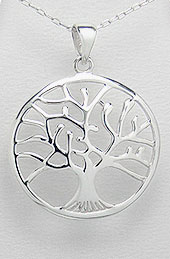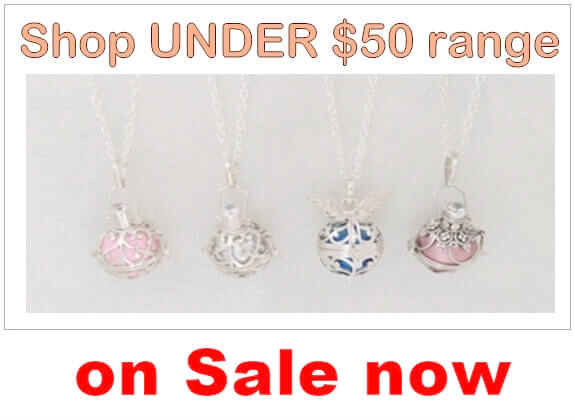Categories
- ALL Harmony Ball Necklaces91
- UNDER $49 Harmony Necklaces50
- UNIQUE Artisan Designs *UNIQUE*13
- LARGE Harmony Balls15
- SMALL Harmony Balls4
- Traditional Balinese Designs39
- Antique Harmony Balls24
- Birthstone Harmony Balls22
- Silver Chains & Necklace Cords3
- Harmony Ball Bracelets5
- Harmony Ball Earrings3
- 'Tree of Life' Jewellery8
- BALI JEWELLERY28
- Specials ...
- New Products ...
- Featured Products ...
- All Products ...
What's New [more]
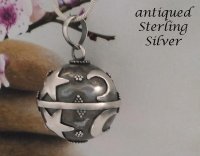
Harmony Ball Large 22mm Moon and Stars in Night Sky, Antiqued
Sale: $43.96
Save: 20% off
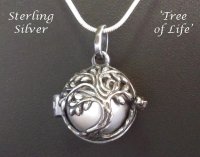
Harmony Ball Tree of Life Necklace, Antiqued Sterling Silver
Sale: $59.20
Save: 20% off
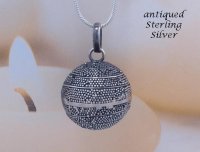
Harmony Ball Antique 925 Silver Polished Bands and Beads
Sale: $46.36
Save: 20% off
Featured [more]
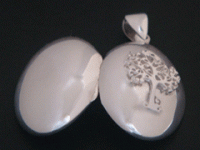
Unique Locket 'Tree of Life' | Pregnancy Locket
Sale: $63.71
Save: 15% off
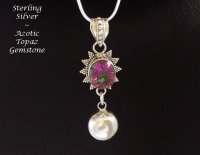
Unique Harmony Ball Necklace with Mystic Topaz Gemstone
Sale: $63.71
Save: 15% off
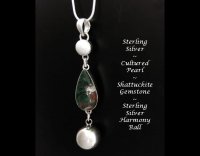
Unique Harmony Ball Necklace with Shutteckite Gemstone
Sale: $63.71
Save: 15% off
Origin of the Harmony Ball and Druid Bell, a Brief History
Harmony Ball and Druid Bell - Ancient Origins and Regional Traditions
a Brief History of the Advent and Development of the Chiming Ball and its Uses
It is known that Harmony Ball pendants, also called other names throughout the ages like druid balls, chime balls, bolas and others, were worn for more than just adornment. Harmony ball necklaces and Druid Bells were worn by different cultures in different regions for different reasons. They were also worn differently, sometimes as a necklace around the neck on a cord or a chain, sometimes attached to clothing again using a leather or twine cord or metal chain. Harmony balls were also made of different materials including metals and certain carved hardwoods and stone.
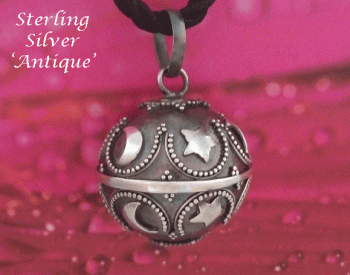
As much as harmony ball pendants varied greatly in design, shape, size and materials there was one commonality - these harmony ball pendants incorporated cultural and family traditions in their designs. The artisans of the time, local artisans from a village or community of villages or region will have used a particular design style pertaining to that region, something handed down from master artisan to apprentice through the generations. So a wearer of a harmony ball pendant, or indeed a Druid Bell, could be recognized by others as being from a particular region or village by the design of the harmony ball.
In addition to the locality aspect of the harmony ball design the local artisan would also incorporate a family emblem component in the design for the wearer representing his or her clan. Often if the harmony ball was used by a warrior, as was the case with Celtic warriors in the wearing of the druid ball, a form of harmony ball. In this instance the artisan would incorporate a family or clan signature emblem into the intricate design of the harmony ball.
Celtic Druid Bells
As much as the harmony ball or bola has been made in Mexican and Balinese cultures for many generations, what we refer to now as Harmony balls actually have their origin way back in Medieval times, designed originally by the ancient Druids of the Celts, the revered and feared community and religious leaders, and were in those times called Druid bells. A Druid Bell is a large chiming sphere of about 2-3" (50-75mm) or more diameter, often made of silver and carried in a leather pouch on the sash or rope belt of the wearer, that creates a tinkling chiming sound, used, among other things, to induce relaxation and release stress.
The ancient Celts first used chiming spheres as meditative devices, particularly by the Druid priests in their sacred ceremonies, gently shaking the spheres to create a mystical bell-like sound which was a way to communicate with nature. The Celtic warriors of the era also wore larger versions of the Druid Bell into battle. These warriors were mainly peasants and as such their chiming balls were very rudimental and rarely made of precious metals as were those used by the Druid priests. They wore the druid balls for their calming effect before a battle and it is also thought that the sound of hundreds of bells as they charged was steeling them to their task and also off-putting to their foes. It is reported that in some cases mutilated bodies on the battlefield were recognized by the Druid Bell as they often had regional representation. In the aftermath of a bloody battle the survivors would collect the druid ball pendants off the dead to take home to their families.
With the demise of the Celt civilization many artifacts used by the Druids were lost to history and the Druid Bell also went this way. However, in the early 20th Century, a German silversmith found an original Druid Bell in an antique shop and recreated the spheres in small quantities. Harmony Balls have continued this tradition with individually handcrafted chiming spheres and jewellery. Use them to reduce stress, introduce tranquility and intrigue to your wardrobe, or to carry music wherever you go. Practicing Druids still exist today, with large communities practicing their ceremonies particularly in the Celtic regions of Wales & Ireland and also in Scotland and Germany (where it is suggested that the Celts originated).
The Celts recognized the value of their Druid Bells for their soothing effect for babies as did other regional communities. It is known that from about 16 weeks gestation a baby can begin to hear sounds external to the mother's tummy. The Harmony Ball can gently stimulate and relax baby as well as the mother.
Druid Bell becomes Harmony Ball in other Cultures
The concept of the Celtic Druid Bell was later replicated in Mexico (Bola) and Bali, Indonesia (Gamelan or music ball) where they are known as the Harmony Ball and replaced the ancient Druid Bell.
Silver, or a silver alloy similar to sterling silver was the choice of metal used by the artisans making harmony balls, in regions where the precious metal and metalsmithing skills were available. In other cases the artisan would use a local hardwood or soft stone to carve out the harmony ball shape and indeed the small bell. Much of the skill in making the harmony ball without the aid of today's technology was in making it hollow, making a small bell and inserting it inside the harmony ball without leaving an opening that would allow the small bell to fall out.
Pregnancy harmony ball pendants were worn by a number of cultures. It is said that the soft chiming sound of the harmony ball pendant would soothe and calm the unborn baby in the womb, and after birth it would soothe the newborn baby. Most women wore the harmony ball as a pregnancy necklace on a long chain that would position the harmony ball over their abdomen, as close to the womb as possible. Some though wore the harmony ball on a shorter necklace, usually cord or chain, so that the pendant did not get in the way as they tended the crops or did their weaving. This article explains in more detail the benefits of wearing of a pregnancy necklace
Pregnancy harmony necklaces were often made by women elders who included the tradition of the woman’s family in their design, not unlike caretakers of the traditional values. Most women would hand down their harmony ball to their female child when she herself became pregnant although many times the harmony ball construction would render it very fragile and they would often break, keeping the local harmony ball maker very busy.
About the Author:
Mike O'Shannessy is an authority on Harmony Balls with many years experience
Date: 2017-9-26
Publisher: harmonyball.net.au

